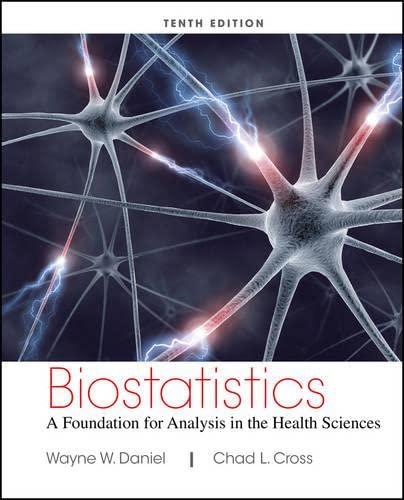The goal of a study by Gyurcsik et al. (A-27) was to examine the usefulness of aquatic
Question:
The goal of a study by Gyurcsik et al. (A-27) was to examine the usefulness of aquatic exerciserelated goals, task self-efficacy, and scheduling self-efficacy for predicting aquatic exercise attendance by individuals with arthritis. The researchers collected data on 142 subjects participating in Arthritis Foundation Aquatics Programs. The outcome variable was the percentage of sessions attended over an 8-week period (ATTEND). The following predictor variables are all centered values.
Thus, for each participant, the mean for all participants is subtracted from the individual score. The variables are:
GOALDIFF—higher values indicate setting goals of higher participation.
GOALSPEC—higher values indicate higher specificity of goals related to aquatic exercise.
INTER—interaction of GOALDIFF and GOALSPEC.
TSE—higher values indicate participants’ confidence in their abilities to attend aquatic classes.
SSE—higher values indicate participants’ confidence in their abilities to perform eight tasks related to scheduling exercise into their daily routine for 8 weeks.
MONTHS—months of participation in aquatic exercise prior to start of study.
With the data set AQUATICS, perform a multiple regression to predict ATTEND with each of the above variables. What is the multiple correlation coefficient? What variables are significant in predicting ATTEND? What are your conclusions?
Step by Step Answer:

Biostatistics A Foundation For Analysis In The Health Sciences
ISBN: 9781118302798
10th Edition
Authors: Wayne W. Daniel, Chad L. Cross






